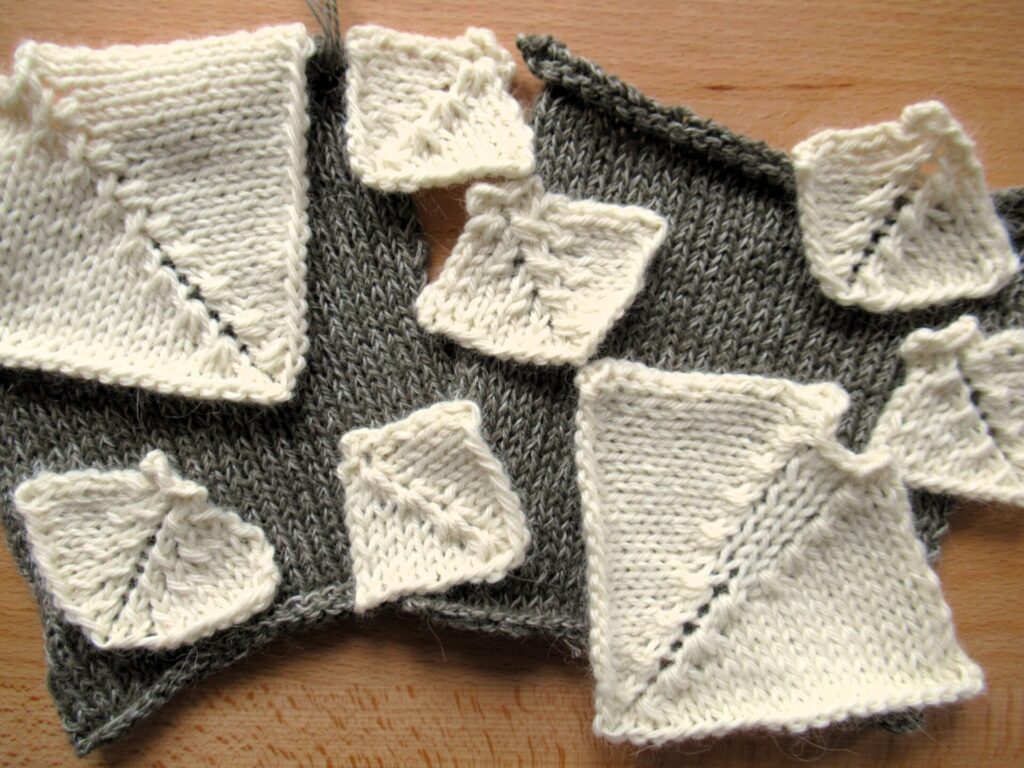
Hello! Today I’m diving deep into double double decreases. If that isn’t really your thing, do scroll down for something completely different.
A Shoulder Problem
What exactly do I mean by double double decreases? And why am I diving into them? Well, it’s to do with the Lillebaelt pullover I’m knitting for our daughter. It is knit in one piece, without any seams. On the top of the shoulders, there are double decreases on either side of where otherwise the shoulder seam would be. No matter how tight I pulled the thread, I got a gaping ladder in between these double double decreases – look:
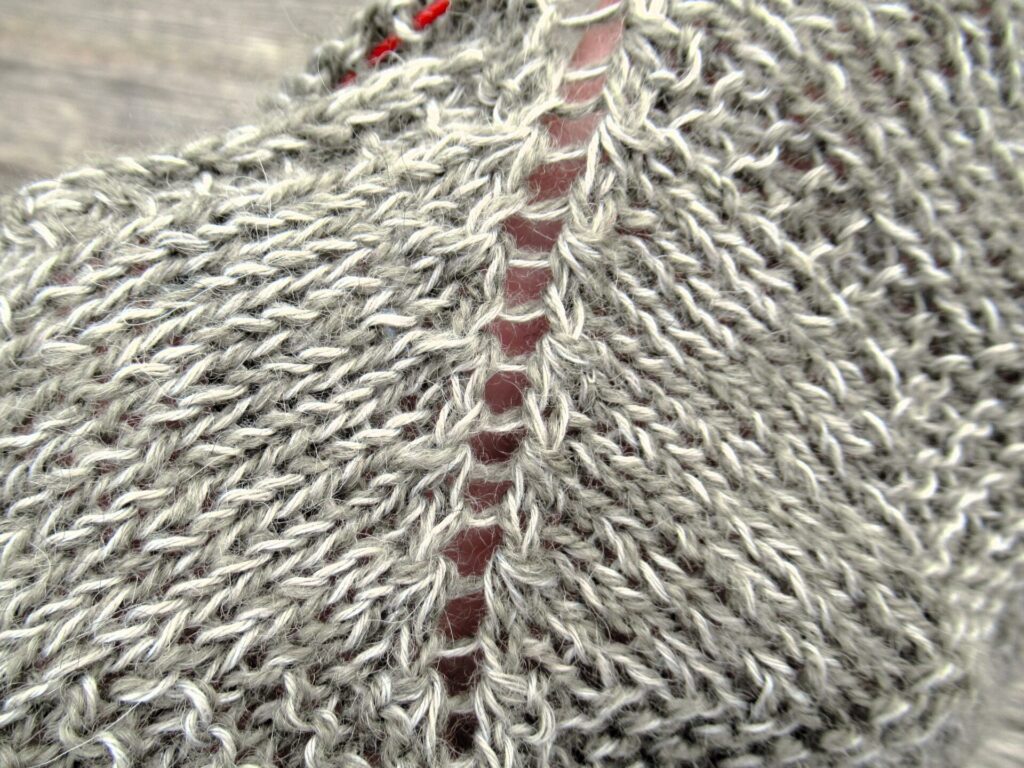
As the entire weight of the pullover hangs on this, I expect it will only get worse. Did the designer have the same problem or is it just me? Let’s take a look at the photographs in the book. Oh, ah, hmm, I see…
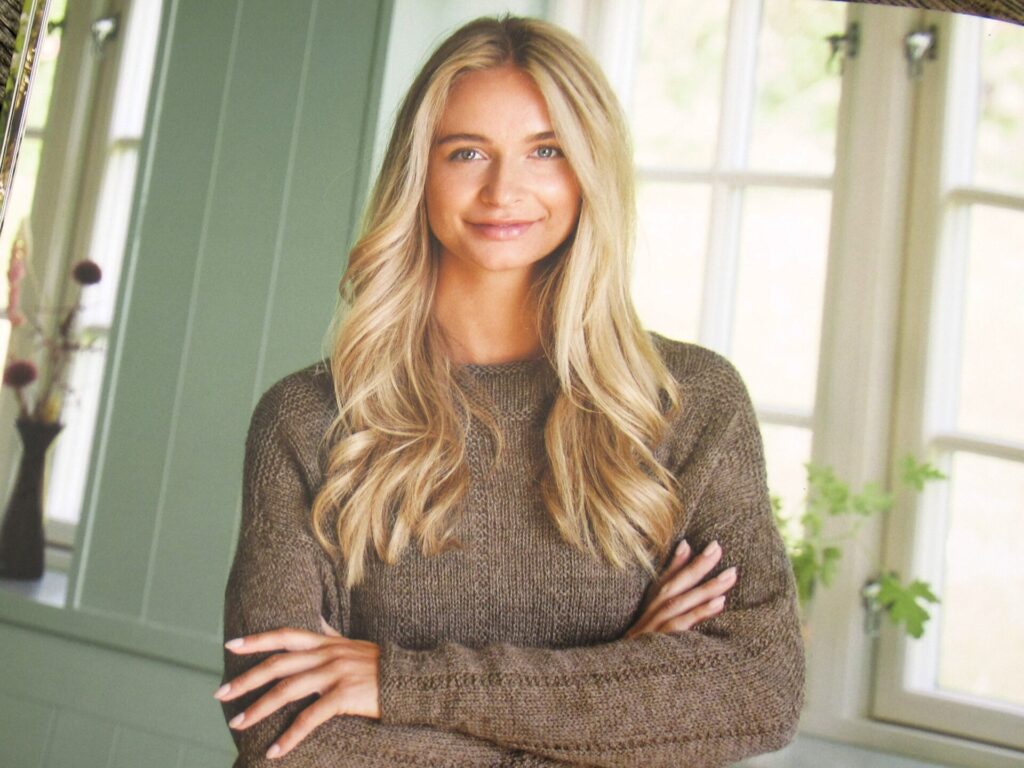
Or rather, I can’t see the tops of the shoulders at all. Oh well, I thought, I’ll pull the stitches together with a thread on the wrong side. But then a knitting friend came to visit, we looked at the problem together, and I decided to rip it out and find a more elegant solution.
Swatching to find a Solution
From a simple undyed DK-weight yarn, I knit swatches to try things out.
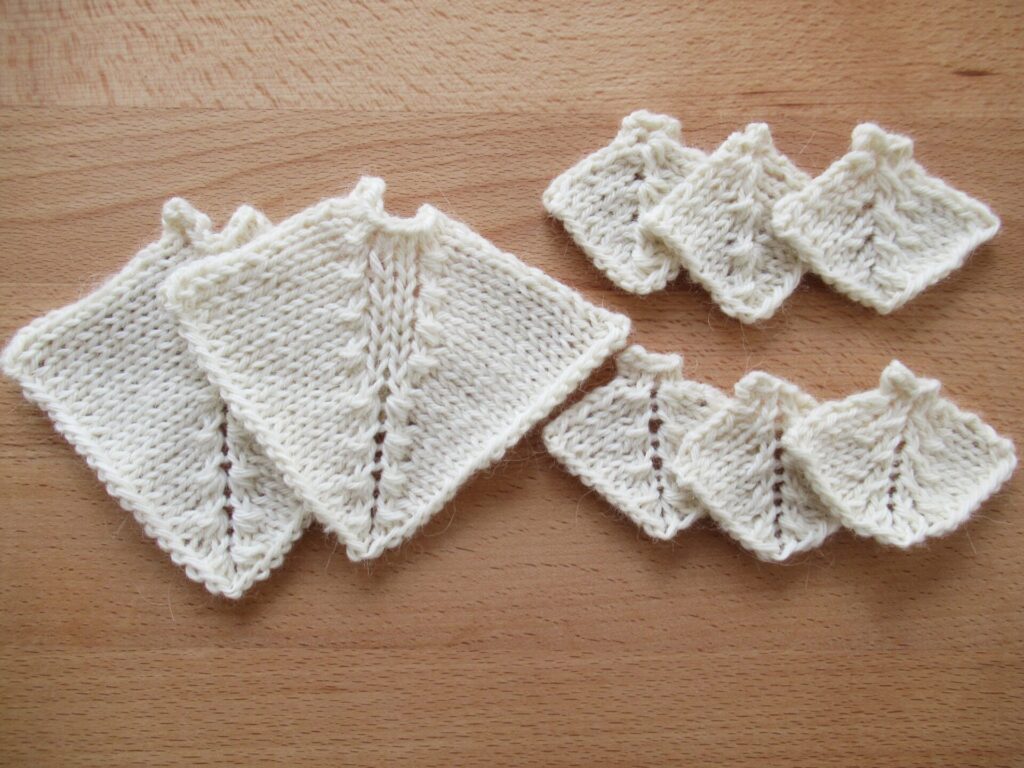
The pattern uses a left-leaning sssk on one side and a right-leaning k3tog on the other. What if I inserted two stitches between the two double decreases? Below, first the original double decreases with ladder, and then the same decreases with two stitches in between.
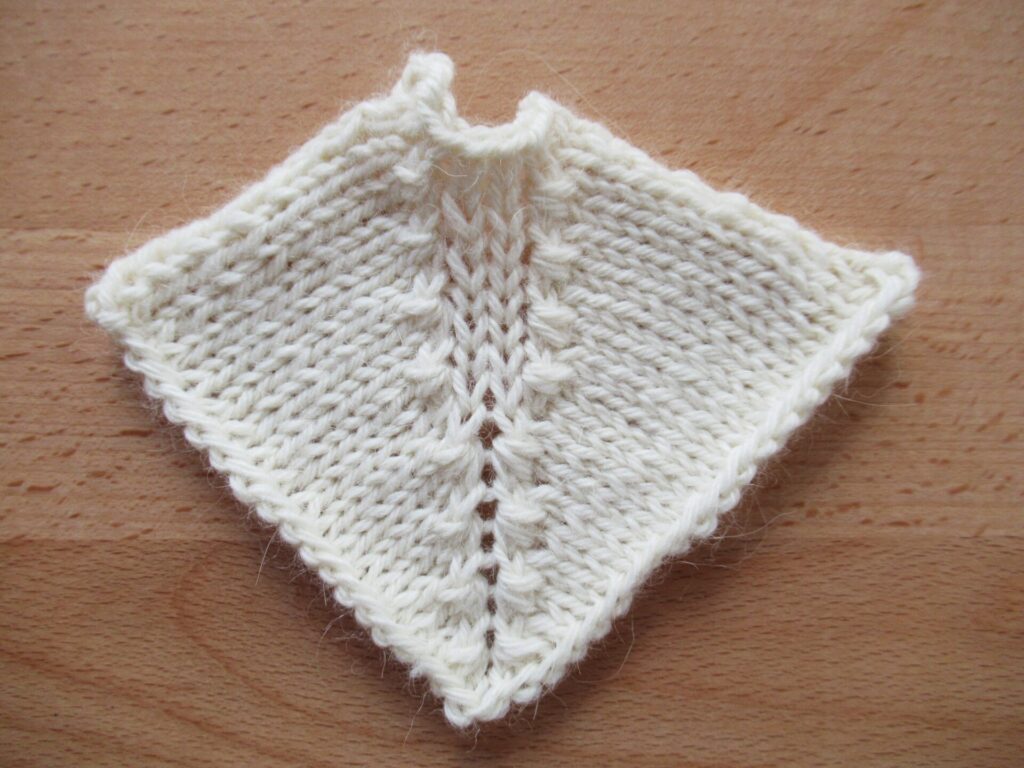
Interesting! The two centre stitches became very loose and open, again no matter how tight I pulled the yarn. So, not strong enough and not suitable.
The double decreases were only done every other row. What if I crossed the two central stitches in the rows between the decrease rows? (Upper half of swatch below.)
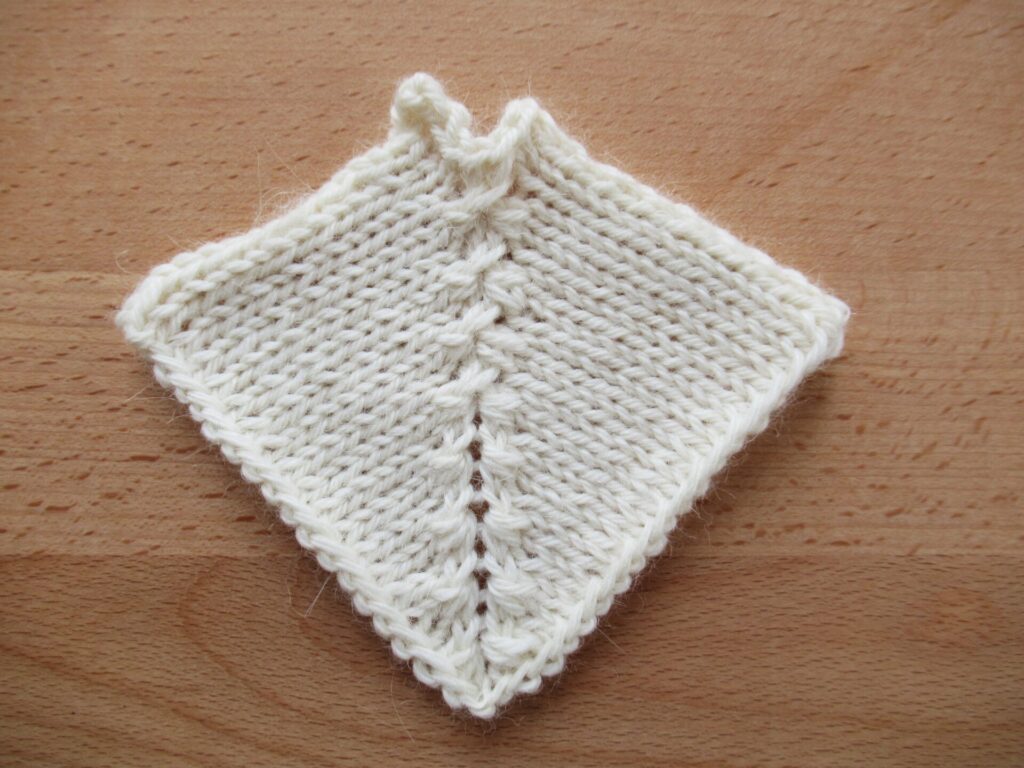
Very decorative and also very strong. But the shoulder section is partly knit in the round and partly back and forth, meaning I’d need to do this partly on the knit RS and partly on the purled WS. And I’d also need to move the start of the row to a different place. Too complicated.
Next I tried out different double double decreases – different ways of reducing two clusters of 3 sts to 1 st each. No joy – ladders appeared in all of them.
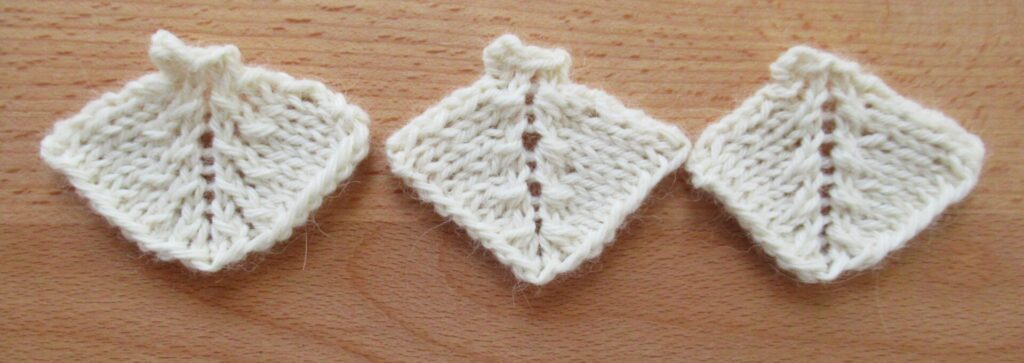
Okay, so what if I approached it differently? Basically, I needed to get rid of 4 sts on each shoulder. What if I reduced 5 sts to 1 in one go? I tried three different ways of doing this out. Very nice, no ladders and strong enough for the shoulders, but…
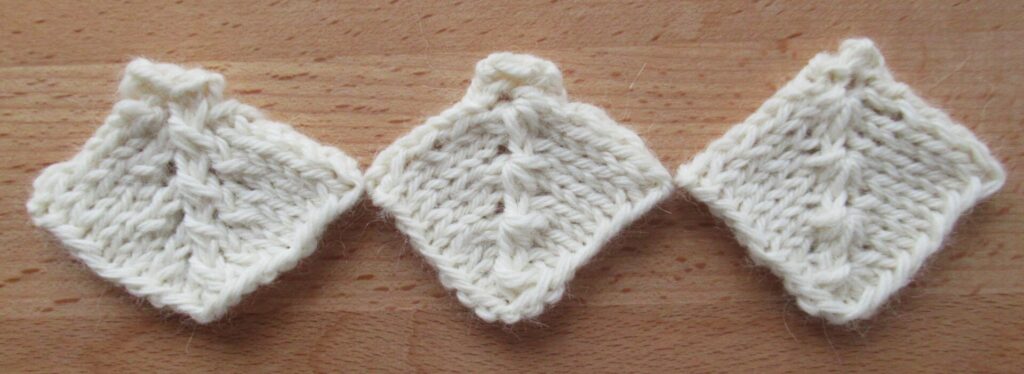
Sadly there were numerous buts. These decreases used an odd number of sts, so I’d need to change the number of sts in a round/row. Plus they were asymmetrical. Besides I’d need to move the start of the rounds/rows to a different place. And the shoulder section was already complicated, with its knit-and-purl stitch pattern knit partly in the round and partly flat.
A Waste of Time?
So….. I’ve decided to go back my original plan: work the double double decreases complete with ladder, and pull the stitches together with a thread on the wrong side afterwards. I needn’t have ripped all those rows out after all. What a waste of time! Or was it? I’ve learnt a lot about double double decreases, other multiple stitch decreases and their pros and cons. For me, that was worth the time.
And now for something completely different
After looking at my knitting problem and having a lovely lunch together, my friend and I went for a walk in a nature reserve called Kale Duinen (Bare Dunes). And guess what we saw?
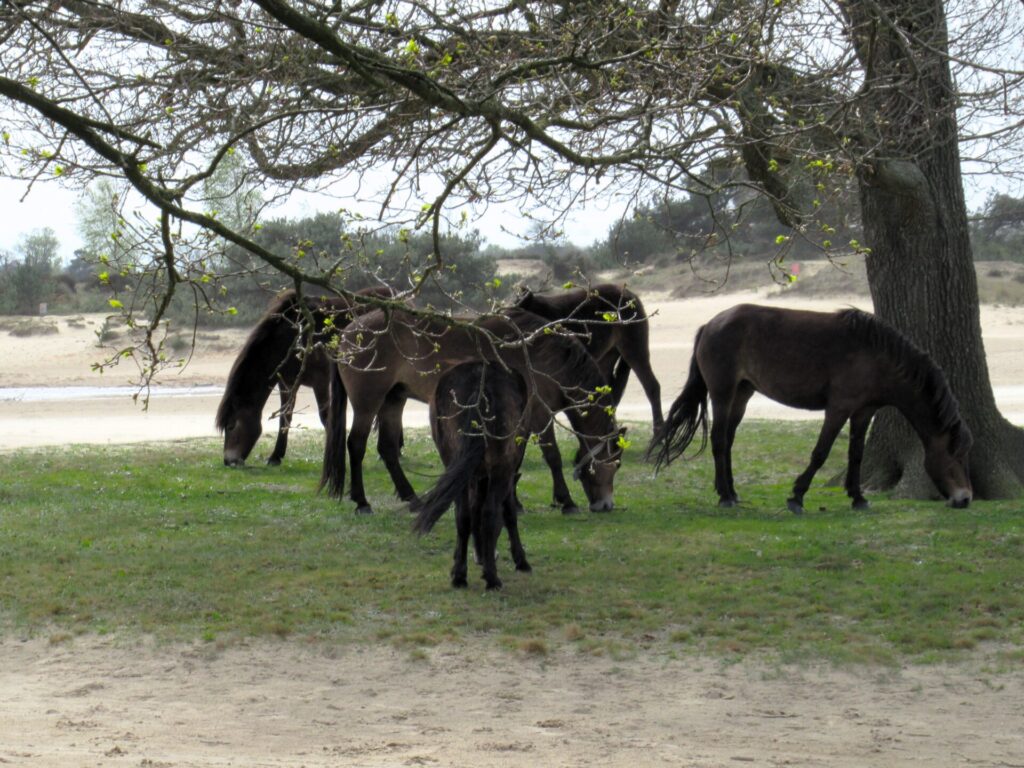
A herd of wild Exmoor ponies! Aww, they look so sweet, with those pale markings around their eyes and muzzles.
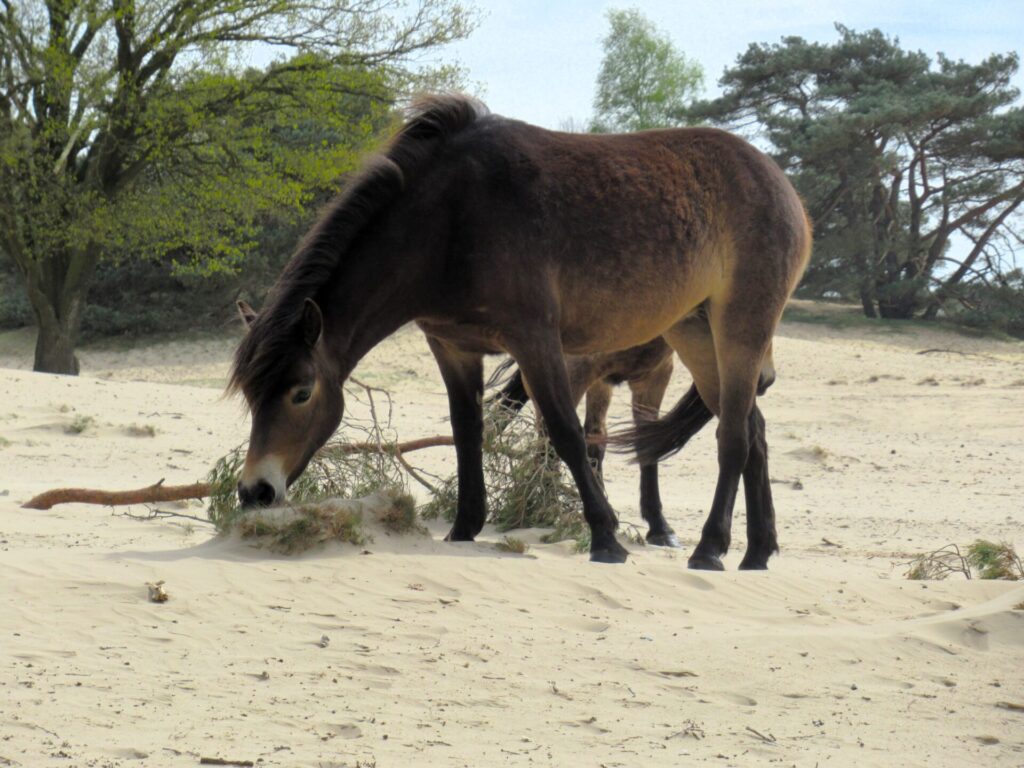
But towering above you on a sandhill, they look powerful and imposing, too. Better not come too close.
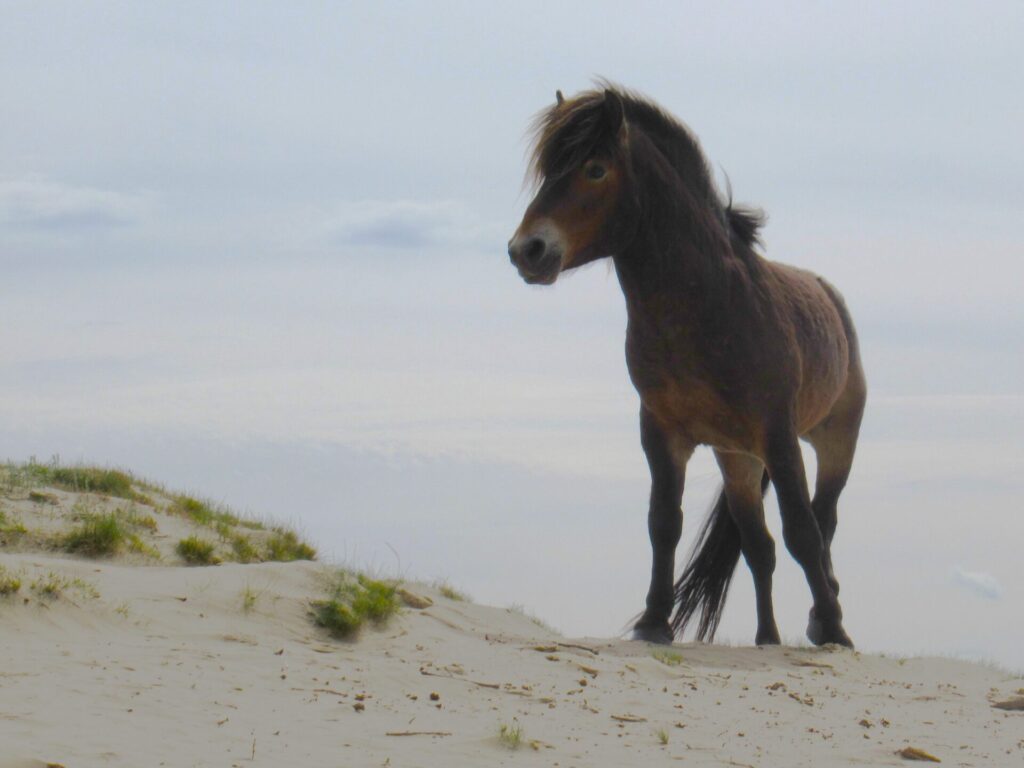
Bye for now and I hope to see you again soon!
I admire your diligence in tackling a problem and figuring out a way to solve it.
Lovely ponies!
It was the first time I encountered ponies in this area and it was a lovely surprise. Thanks for your kind words!
I loved reading this. I guess it appeals to the engineer in me. I wonder that the designer let the ladders pass without comment! Do tell how it worked out in the final garment.
I’m so glad you loved reading this and don’t think I’m an obsessed weirdo for knitting all these little swatches (I felt a bit vulnerable publishing this post). I’ll certainly let you know how it all worked out.
It’s all good. Even your swatches look good! Were you able to contact the designer?
Wow, what a treat to see the ponies. Thank you for sharing your adventures, knitting and otherwise… !
It never occurred to me to contact the designer. She’s famous, with many knitting books to her name – I don’t know if I’d dare to. As always, thank you for stopping by!